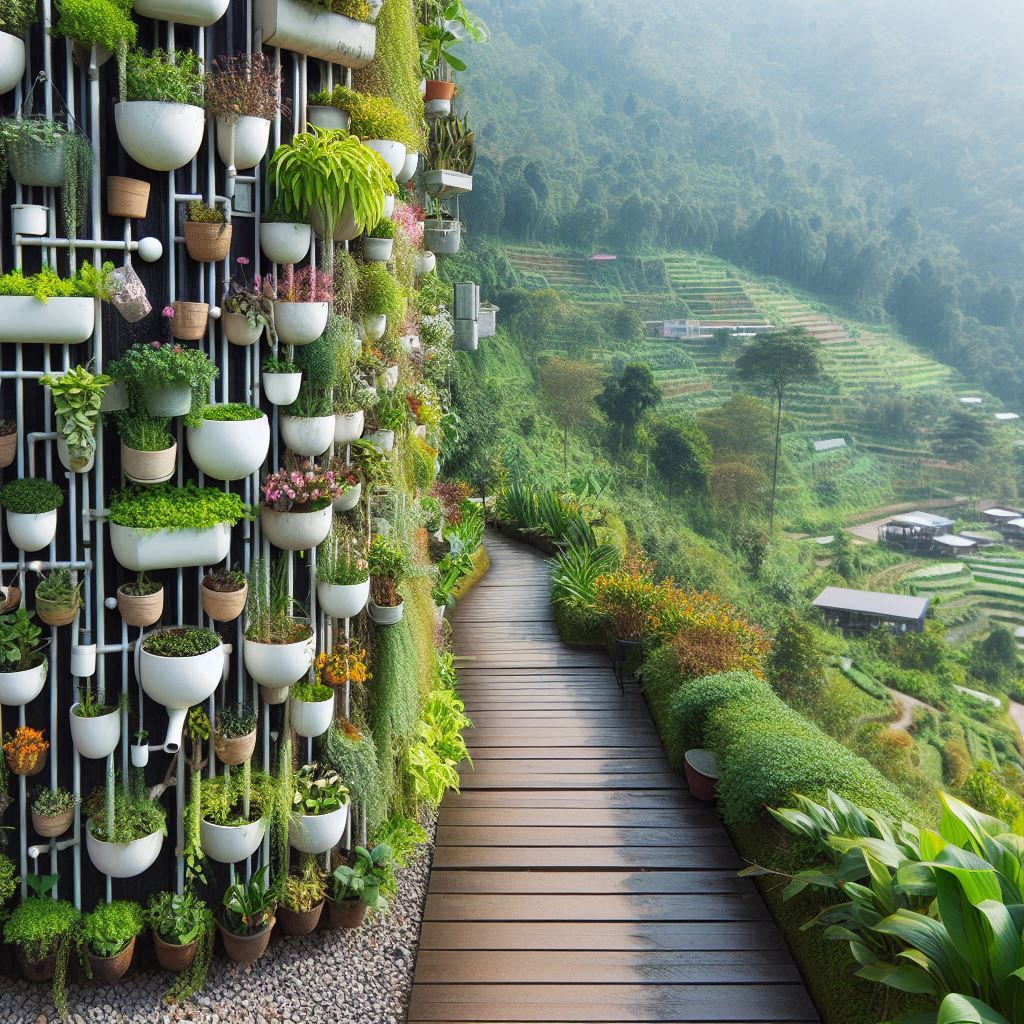What is Vertical Gardening?
By growing plants upwards as opposed to horizontally, vertical gardening is a creative way to garden that makes the most of limited space. This technique entails using vertical frames, wall-mounted planters, or trellises as supports for a variety of plant growth. Small gardens, patios, or even balconies with limited ground space benefit greatly from it. Vertical gardening is a great option for urban gardeners or anyone with limited space because it not only makes your garden more aesthetically pleasing but also enables you to grow a greater variety of plants in a compact area.
Choosing the Right Plants for Vertical Gardens
It’s crucial to choose plants that do well in vertical settings because not all plants are good for vertical gardening. Natural fits are climbing plants, like clematis, jasmine, and ivy, which grow upwards and cling to supports naturally. Vegetables that grow on vines and are easily trained to climb a trellis or frame include tomatoes, cucumbers, and beans. These are excellent choices for vertical gardening. Ferns, succulents, and even herbs like mint or basil can be planted in hanging pots or wall-mounted planters to provide both beauty and functionality for those who prefer flowers and greenery.
Benefits of Vertical Gardening
Vertical gardening offers many advantages beyond space conservation. Improved air circulation around the plants lowers the risk of pests and fungal diseases, which is one of its main benefits. Because plants grown at different heights are more accessible and require less bending or crouching to water, prune, or harvest, vertical gardens are also easier to maintain. Because the plants in vertical gardens grow neatly along their supports rather than spreading out uncontrollably, they also contribute to the creation of a more orderly and aesthetically pleasing environment. Vertical gardening is a practical and entertaining approach to grow more in a small space by making the most of available space and boosting plant productivity.
Setting Up Your Vertical Garden
Since a vertical garden can be customized to fit any size or budget, setting one up is easy and adaptable. As sunlight is vital to the health of your plants, start by selecting a spot that gets enough of it. Choose your support structure next. You can use a wooden frame, trellis, hanging planters, or even repurposed materials like pallets. Verify that the framework is strong enough to hold the weight of the pots and plants. After everything is set up, arrange your plants based on how much light and water they require. Vertical gardens are useful and aesthetically pleasing additions to any outdoor or indoor area since they can be tailored to your own style.
